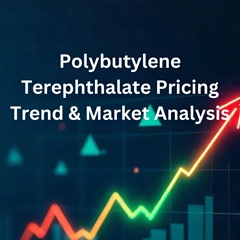
Polybutylene Terephthalate (PBT) Pr
Polybutylene terephthalate (PBT) is a highly valued thermoplastic material used in many industries, from automotive manufacturing to electronics. Known for its durability, dimensional stability, and resistance to heat and chemicals, PBT is a go-to material for a range of applications. As we approach 2025, it’s important for manufacturers, suppliers, and consumers to understand the pricing trends for PBT. Various factors are at play, including global economic conditions, supply chain issues, and demand from key industries, which could lead to price fluctuations. Let’s dive into the factors influencing PBT pricing and what to expect in 2025.
The Post-Pandemic Economic Recovery
The global economy continues its recovery from the COVID-19 pandemic, and by 2025, many sectors are expected to see substantial growth. The automotive, electronics, and consumer goods industries are projected to bounce back as demand rises for advanced materials such as PBT. This recovery is likely to drive up demand for PBT, potentially leading to an increase in prices.
Economic recovery also means that industrial production will pick up, creating an environment where competition for raw materials intensifies. The growing demand for PBT in applications ranging from automotive connectors to electrical systems and consumer electronics will likely result in price increases. With the global supply chain still catching up from the pandemic, delays and shortages could further push prices upward, making it essential for businesses to plan accordingly.
Book a Demo for a real-time, data-driven insights: https://www.price-watch.ai/book-a-demo/
Volatile Raw Material Costs
Polybutylene terephthalate is primarily produced using two key raw materials: terephthalic acid (TPA) and butanediol (BDO). Both of these materials are derived from petrochemicals, making PBT prices sensitive to fluctuations in oil prices. When oil prices rise, the cost of producing TPA and BDO increases, which in turn raises the production costs of PBT. Therefore, the price of PBT is directly tied to the global oil market.
Looking ahead to 2025, global oil prices are expected to remain volatile. Factors like geopolitical tensions, supply chain disruptions, and fluctuations in demand for oil could all contribute to rising raw material costs. As a result, manufacturers may face higher production costs, which could lead to higher PBT prices. However, if oil prices stabilize or decrease, it could offer some relief to PBT producers and consumers, potentially slowing the rise in prices.
Increased Demand from the Automotive Sector
One of the key drivers of PBT demand in 2025 will be the automotive industry. PBT is commonly used in manufacturing electrical components, connectors, switches, and other parts that require heat resistance and electrical insulation. As the automotive industry shifts towards electric vehicles (EVs), the demand for PBT is expected to surge.
Electric vehicles require a range of high-performance materials to meet the stringent requirements for heat resistance, electrical insulation, and durability. As a result, PBT will become an increasingly critical material for EV production. In addition, the automotive industry’s push for lightweight vehicles and energy-efficient designs will further amplify the demand for PBT. With the increasing need for PBT in EV manufacturing, prices could rise as automakers compete for the material to meet growing production goals.
The Influence of Sustainability on PBT Production
Sustainability efforts continue to influence the production of materials across industries, and polybutylene terephthalate is no exception. There is a growing push toward using more eco-friendly alternatives to traditional petroleum-based plastics, which is driving the development of bio-based PBT and recycled PBT.
These more sustainable forms of PBT often come with higher production costs. Bio-based PBT, for example, requires raw materials derived from renewable sources, which can be more expensive than the petrochemical alternatives. Additionally, the production process for bio-based and recycled PBT may be more costly, as new technologies and systems are required to ensure high-quality production. As sustainability becomes a key focus for businesses in 2025, the shift toward these greener alternatives could result in higher prices for PBT, at least in the short term.
Supply Chain Challenges and Global Disruptions
Supply chain disruptions have been a significant challenge in recent years, and these issues are likely to continue into 2025. Global shipping delays, labor shortages, and shortages of key raw materials can all create disruptions in the production and distribution of PBT. These challenges make it harder for manufacturers to secure the materials they need, leading to increased prices.
If global supply chains continue to experience delays and issues in 2025, it could lead to shortages of PBT, which would result in higher prices. Supply chain disruptions also affect the cost of transportation, which further increases production costs. Businesses involved in sourcing or manufacturing with PBT must be prepared for these potential challenges and adjust their strategies to minimize risk.
The pricing of polybutylene terephthalate in 2025 will be influenced by a variety of factors, including the ongoing economic recovery, rising demand from key sectors such as automotive and electronics, raw material price fluctuations, and supply chain disruptions. With the growing demand for PBT and the challenges posed by global supply chains and the transition to more sustainable manufacturing, businesses can expect to face higher prices in the coming year.
By staying informed about these factors and adjusting procurement strategies accordingly, companies can better navigate the changing PBT market in 2025. Proactive planning, risk management, and close monitoring of market conditions will be key to maintaining cost control and competitiveness in the evolving landscape.






